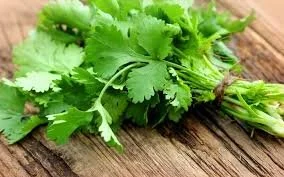הָשַּׁתָּא עַבְדֵי, לְשָׁנָה הַבָּאָה בְּנֵי חוֹרִין
This year we are slaves. Next year we will be free people. —Passover Haggadah
Last year at this time, we were all adapting to what it meant to conduct a seder via Zoom, physically distant from our loved ones. And, to some degree or another, we made the adjustments. Even if those seders weren’t the greatest of our entire lives, most people agreed that technology made it 70%, or 43%, or 29% successful.
At that time, we figured that this was a temporary gesture. Within a few weeks (remember?), we said to ourselves, this will all be over, and we’ll remember how strange and different the Seder of 2020 was. Surely we’ll be “free” by summer.
Now we’re preparing for our second Pandemic Seder. Almost 540,000 Americans have died from Covid, let alone the victims all over the world. We’ve learned how to adjust our behaviors, adapt our daily rituals, and act responsibly for our own sake and the sake of others. (Well, most of us—except for the most obtuse and irresponsible among us—have learned how to do so.)
This year’s Pandemic Seder will feel different. The availability of vaccines has made it possible for some people to be with each other; we don’t live in mortal terror for our parents, grandparents, and the elders of our community quite so much. There is a feeling that even if we are having socially-distanced seders now, there is hope on the horizon that we’ll be liberated from these narrow, confining spaces very soon. And that hope, it seems to me, is very “Kosher for Passover.”
Early in the seder, we observe a ritual involving two symbols. We take up a green vegetable—“Karpas”— a symbol of springtime’s renewal. A Hasidic commentary reminds us that Pesach is also Chag Ha-Aviv, the Festival of Springtime, and after a long, cold winter, the world is slowly renewing its warmth and vitality. Even though we have just passed through winter, this holiday endows us with renewed energy for Life.[1]
We take the Karpas and dip it into a dish of salt water, which symbolizes the tears of suffering.
Each symbol thus has a distinct meaning—but what does it mean to dip one of these symbols into the other?
It means that our lives are almost never entirely joy or entirely sorrow. Real life is a mixture of those two elements, one dipped in the other. Our celebrations include a reflection of those who are no longer with us. By contrast, our bereavements are tempered by sweet memories and love that endures.
Dipping the Karpas into the salt water is a timely and powerful ritual. Because this year, as much as ever, we know the symbolism of hope mixed with tears. As our world opens up, it is crucial that we do not lose sight of the fact that there has been so much death and sorrow all around us for these many months; social distancing hasn’t just been about inconveniencing ourselves, it’s been about minimizing the danger to ourselves and others. So much loss is contained in the seder’s salty waters.
But in that loss there is hope. The green vegetable promises us that we’ll emerge and from this and new life will blossom—soon. The winter has passed. The vaccines are here; they’ll be available to everyone in the near future. Soon we’ll be out of this, if we can just hold on a bit longer. And when we emerge, our freedoms should be to us sweeter than ever; our relationships should be even more precious; and our empathy to those who hurt should be so much deeper.
From our pains, we learn the preciousness of life. Passover promises liberation from all forms of enslavement. Its hope, as ever, is born from salty tears.
[1] In The Chassidic Haggadah, Rabbi Eliyahu Touger, 1988.
